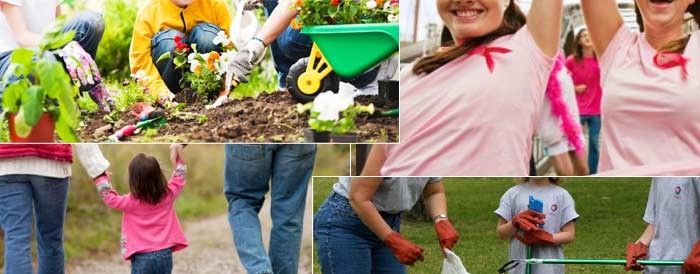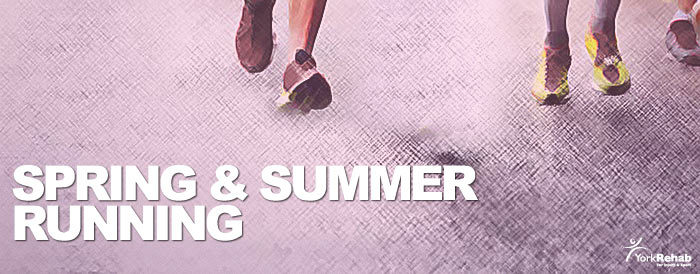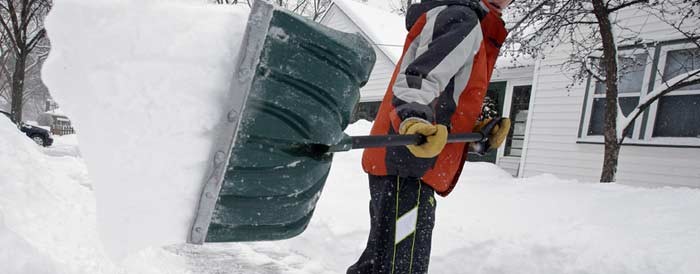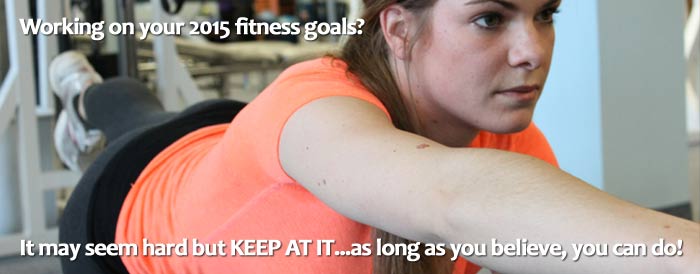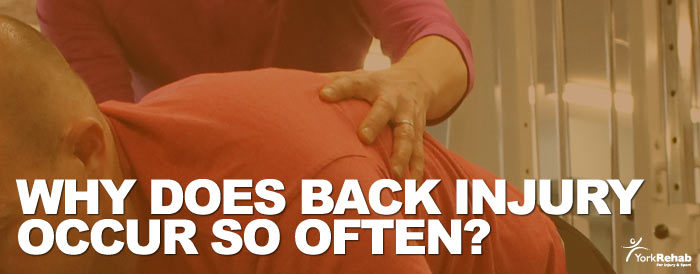Fitness & Excercise
Clean Up Your Family Fitness Routine for Spring
The weather is starting to warm up, once again making it more enjoyable to spend time outdoors. Some of you have been tough enough to brave the cold and enjoy the outdoor activities but for those less tolerant of the sub-degree temperatures, it’s time to start taking advantage of the thaw. Here are a few simple ideas that can offer you some family fitness while also enjoying a little time with loved ones. So go outside and PLAY!
Hike/Bike
The trails are re-emerging now that the snow is disappearing. Take the family for a walk or a bike ride to re-discover spring. Enjoy the early stages of the grass going green and maybe play a game of “spot the new buds” that are starting to pop out. A hike or bike ride will provide some benefits like building endurance, strengthening legs, and improving cardiovascular fitness for the entire family.
Join a Local Park Cleanup
When you and the rest of the family volunteer for a park cleanup you’ll make a difference in your community. And you’ll enjoy the added benefit of getting some exercise and enjoying plenty of sun (which equals a nice dose of vit D).
Find a Walking Group
Find a local walking group. Almost every community has one. You and your family might just discover some new places that are off the beaten track. The kids will feel like explorers. And the fresh air will do wonders for everyone’s lungs while the movement builds your legs and heart health – and you’ll burn a few calories that can take away from your bottom-line (literally).
Participate in a Run for Charity
Spring is a popular time for local charity events that promote walking, running or cycling. You’ll be helping a causing, meeting new people and staying active. It’s a great way to improve your cardiovascular fitness because you’ll be moving with the crowd and likely doing more and going further than you would on your own.
Start a Garden
Gardening is always fun for little ones. Not only do they love getting dirty but they bask in the anticipation of the waiting for the seeds to grow. The benefits of gardening are tenfold because it’s never just a one-time activity – you have to keep going back for more. Whether it’s to maintain (or weed), watering, harvesting or checking out the progress for curiosity sake – you’ll return to your garden very regularly. Each visit to your garden is equal to the same amount of time away from your couch!!
So spring up and GO!!
Spring/Summer Running
Spring is here –time to follow-up on all of your New Year’s resolutions and dust off your sneakers!
Before we know it, summer will be upon us and the heat we’ve be yearning for all winter will finally be here.
Be sure to prepare for the summer conditions to ensure you succeed with all your summer running goals.
PRE-RUN:
- Monitor the weather forecast. Note the UV index to reduce your risk of harmful overexposure to radiation. In addition, pay attention to the Humidex as it incorporates both humidity and temperature. As a general rule with both indexes, the higher the number, the greater the need to exercise caution.
- Dress appropriately. “Cotton is rotten”, or so they say. Technical or quick-dry clothing are best, as they are lightweight, offer warmth without bulk and have effective properties to remove moisture away from the skin. Use the “Rule of 10” as a guide in choosing those layers -dress for temperatures 10 degrees warmer than that listed. To avoid overheating, you should feel cool as you head outdoors –you’ll feel warm within 10-15 minutes after starting of your run. Don’t forget important accessories such as a running hat or visor, in addition to sport sunglasses.
- Protect your feet. Check for tears and/or wear patterns on your shoes. The cushioning foam becomes compressed and/or breaks down after continued impact, resulting in reduced shock absorption. If you can’t remember the last time you purchased a new pair of shoes though, chances are, you need to go shopping! Running shoes should be replaced approximately every 800 kms.
- Run safe. Run with a buddy or, if you plan to run alone, notify others of your route and your expected departure and return times. Run in a series of loops and have a designated turn-around point should you need to cut your run short or seek shelter. Always run with identification and carry a cell phone in the event of an emergency.
MID-RUN:
- Monitor for early signs of heatstroke. This is the most serious heat-related illness. Prolonged exposure to high temperatures results in an elevated core temperature. This then causes a series of symptoms ranging from nausea, seizures, confusion, disorientation and sometimes loss of consciousness. In extreme cases, it can even cause death.
- Stay hydrated. With higher temperatures, your sweat production will increase. The evaporation of water from the skin by increased body heat is used as a means of temperature regulation. With increased loss of fluid, your risk for dehydration increases. Carry a water belt with you to replenish fluids lost –avoid extreme thirst!
POST-RUN:
- Perform a cool-down. Low intensity activity, promoting functional range of movement is recommended.
Should you require information and recommendations for exercising safely with a variety of health conditions consult a member of our Physiotherapy Team at YRA.
Volunteering for Fitness
Did You Know? Neighbourhood Network coordinates a volunteer snow removal service for eligible seniors and persons with disabilities. The program matches volunteers who can shovel snow with registered individuals within the community who are not able to clear the snow from their property on their own.
What is the Neighbourhood Network you ask. It’s a not-for-profit division of Magna International Inc. that exists for one reason: to help you give back where you live! Learn more about the program here and if you are able, please consider volunteering – it’s a great way to give back and be active at the same time.
Achieving Fitness Goals
Ten things to consider as you work on fitness goals for the new year:
- Create realistic and specific goals.
Aim high but be realistic. Setting a goal of running a marathon(42K) within the next year when you’ve never even run a 5K distance may be a situation where your intention may be genuine but the practicality may be unreasonable. If you don’t run regularly, start with a goal of committing to 1 – 2 runs per week with a goal of 4 – 5 times per week within 6 mos. Make your goals meaningful but practical and remember small steps are all that is required…no need to hit a home run every time. Running for 20-30 minutes 3 times a week is better and safer than a 60 minute run once every 1 – 2 weeks.
Also, be specific. Start with “I’ll exercise 3 mornings a week” versus, “I’ll start going to the gym more this year”. - Choose fitness activities that you enjoy.
Fun and enjoyment are terrific motivators. Select fitness activities that challenge you, but that you can enjoy. Fitness activities work better when there’s a personal fit – exercises or classes that YOU enjoy which also make you feel good about you and your ability to achieve your goals. If you can do it for enjoyment instead of out of obligation, you will have found the magic mixture. Whether alone, in a highly active group like a Zumba or Spin class, make it your plan to find an activity that you enjoy. - Don’t set goals for the year…create monthly targets instead.
Remember to set realistic, simple goals. Avoid long term goals that may seem unattainable chores. Instead set new goals monthly. These are easier to measure and will thus keep you motivated. As you achieve a short term goal, you may push yourself for a bigger challenge. This approach helps you to be flexible. Some weeks you may fall short, then the next time you may surprise yourself. Your fitness is for you and you want to succeed so set goals that you can touch and feel so you see your accomplishments. - Accountability needs to be part of the process.
What’s your accountability plan? What ensures that you are on track? As mere mortals accountability is vital. You may set your own accountability schedule by writing down and checking off planned activities. Alternately, have a helper or find a buddy and work at keeping each other accountable. A Trainer, if affordable, is a great asset and incentive for motivation and accountability. Whatever method you use make it a regular and fairly rigid process. - Success comes easier in twos.
Exercising with another person increases fitness success rates. A gym or fitness buddy adds motivation, accountability, regularity, and best of all fun! Plan your workout, gym or exercise classes early to attend together. If you can’t find a friend, make one at a gym or exercise class. - Recognize the small accomplishments along with the big ones…and reward yourself!
As you set and achieve those small goals reward yourself!! Celebrate successes alone or with others, and let the world know you have lost two inches – if that was your goal. Treat yourself to something that you enjoy. Perhaps purchase that two sizes smaller outfit that you were eying; or splurge on a favourite meal or movie with your buddy or a friend. You have done well!! - Keep a record of your progress.
As you complete your daily exercise activity write it down. Not only is it a useful way to track progress, it’s something that you can refer to for encouragement if you get of track. Seeing how much you’ve completed often provides that incentive to continue. - The reason for doing should be for more than just weight loss.
There is much more to getting active than just to lose weight. It’s the fuel for becoming a healthier, stronger, feeling better about yourself and ultimately happier individual. The way you look will is just the icing on the cake (the cake reference is figurative…not a fitness recommendation). - As each new day comes, act like it’s the first day of the year.
The new year provides great motivation for introducing new habits and goals into our lives. But once the first few days pass, falling back into a rut can be a danger. Create new motivation for yourself by treating each day as the start of the year…look at it as an opportunity begin a new and before you know it you’ll have formed a habit that makes it easier to continue. - If you fail by stopping, simply start again…stumbling blocks are part of the process!
Do not be discouraged. Resolutions are not always easy to stick to. Stumbling or stopping is okay as long as you get back up and start again. Once you falter, assess the reason and resolve to start again. If building momentum is hard, reevaluate your approach. Perhaps try a different method, set a smaller goal, or give yourself a short break. Don’t give up! Resolve to starting again and again until you find your rhythm towards success.This is your life, and you only have one so take good care of it. Think positive. Have FUN and remember, if you truly believe you can, you will!
Why Does Back Injury Occur So Often
The vast majority of back injuries are accumulative in nature. What that means is that, on average, it takes 35 to 55 years of living before you accumulate enough wear and tear on the structures of the back that they begin to cause pain. The onset of pain can be quite variable. Often a person may notice only a bit of stiffness after prolonged sitting or bending, or mild discomfort after physical exertion such as snow shoveling. This can go on for years before anything more dramatic occurs. For others, the onset can be sudden and intense after a seemingly innocuous event such as sneezing or a bout of coughing.
Of course, back pain can also occur as the result of an injury where enough force is involved that the back structures sustain an acute injury. For example, a hyper-extension injury in soccer, falling off a horse or a car accident. In these circumstances, the back will progress through a healing cycle and repair the tissue. Depending on the severity of the injury, as with any structures of the body, you may be left with a “weak link” as the repair may not be perfect (eg. Ligaments maybe more lax post-injury which can affect the mechanics of the spine).
Obviously, these “weak links” will be more vulnerable to the usual stresses we place on the spine such as poor posture, inactive lifestyles etc. As a result, it is often noted that the pain from the original injury at some point did actually resolve but returned months or years later. This leads people to believe that the original injury never healed when in fact postural habits and time are catching up with them and “weak links” are going to feel the effects first.
With any injury it is helpful to receive some education on the healing process early on and instruction on what you can do to promote tissue repair to get the best outcome possible. Early intervention is the key.

